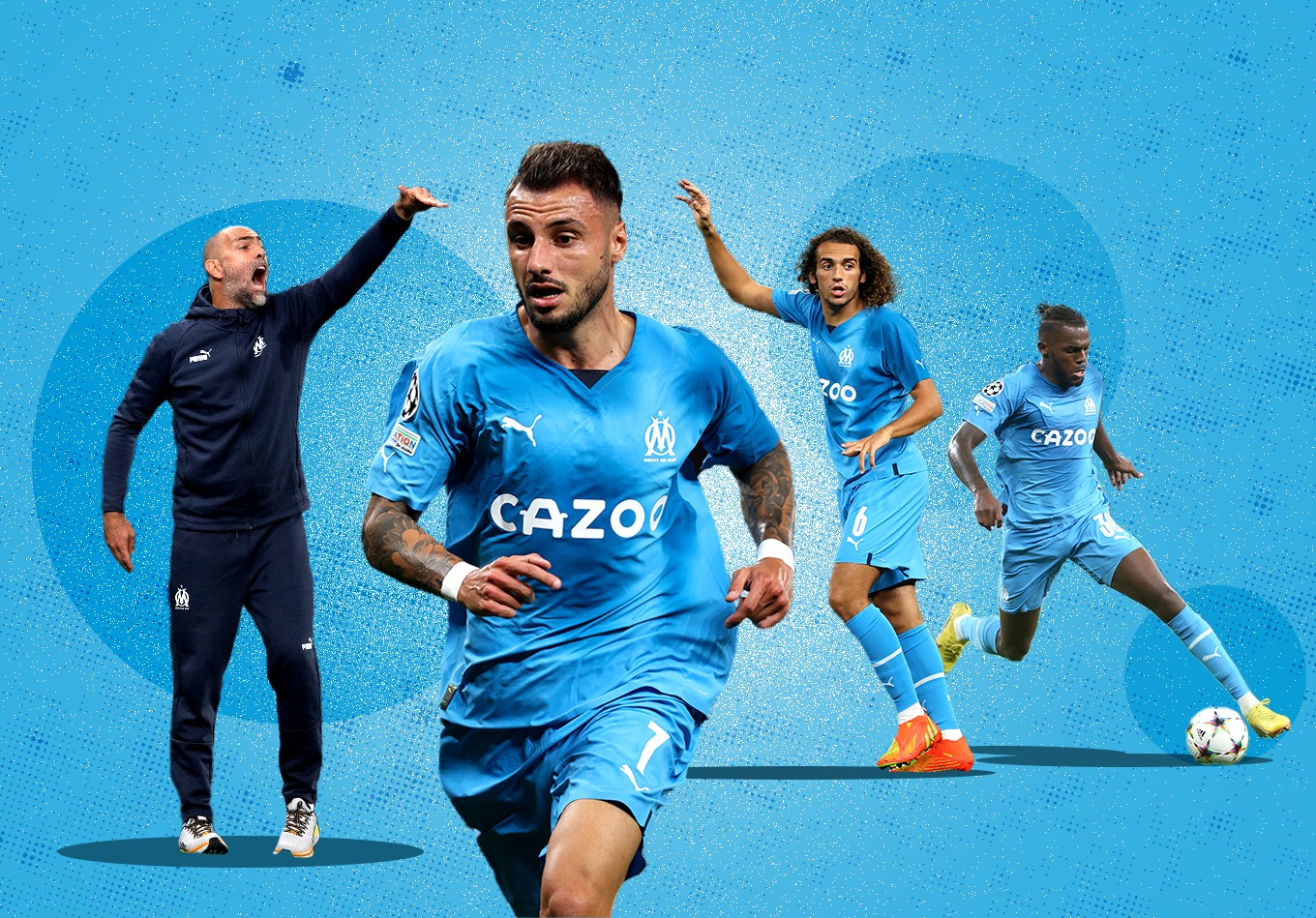It was a summer of change at Marseille.
Manager Jorge Sampaoli unexpectedly left the club despite finishing as runners-up in Ligue 1 last season. William Saliba returned to Arsenal following his loan spell at Stade Velodrome, Boubacar Kamara departed on a free transfer to join Aston Villa and Luan Peres joined Fenerbahce. All three were key players as OM qualified for the Champions League.
Arkadiusz Milik, the club’s top scorer last season across all competitions, also left to join Juventus on loan during the final week of the transfer window.
Marseille were powerless to retain Saliba and Kamara, but it was the manager’s decision to allow Peres and Milik to depart if reports are to be believed. Igor Tudor may have been a surprise appointment, but he did not waste time putting his stamp on things.
Having impressed with Verona in Serie A last season, guiding them to a ninth-place finish, Tudor moved on from his eighth managerial role across nine seasons.
It may have seemed like a left-field choice, but perhaps it should not have been.
After being named club president, Pablo Longoria quickly set out what he wanted to achieve:
“We make football for our supporters. The first objective is that our supporters recognise our team with a concrete style. The moment we have an identity, and we have our supporters playing with us in the field we can achieve the results the supporters deserve.”
Tudor had a concrete style during his season with Verona. He adopted the 3-4-2-1 shape from his predecessor, Eusebio Di Francesco. He did make some tweaks to it though, using man-orientated tactics during defensive transitions, not too dissimilar to Marcelo Bielsa’s Leeds United set-up. However, this was not implemented throughout the pitch. Instead, it was a mid-block press, and this gave his side space to hit during counter-attacking situations.
It was a distinct style. One that could easily be transferred. It also suited the collection of players at Marseille assembled by Longoria.
To replace those who left, OM brought in Chancel Mbemba, Eric Bailly, Alexis Sánchez, Jordan Veretout, Nuno Tavares and rumoured Chelsea transfer target Jonathan Clauss.
Marseille had a new manager, a number of new players and a new system.
That’s lots of changes, yet OM find themselves just three points off the top of Ligue 1 after 10 matches. So how has Tudor managed it all?
Towards the end of his time with the club, Sampaoli favoured more of a 4-3-3, and to great success, reaching the Europa Conference League semi-final and claiming the title of best of the rest in Ligue 1 behind PSG.
Earlier on during his reign, he went with a 5-3-2 shape. In both systems, the idea was to flood central areas with bodies. It was organised chaos.
Tudor has deployed a more structured system.
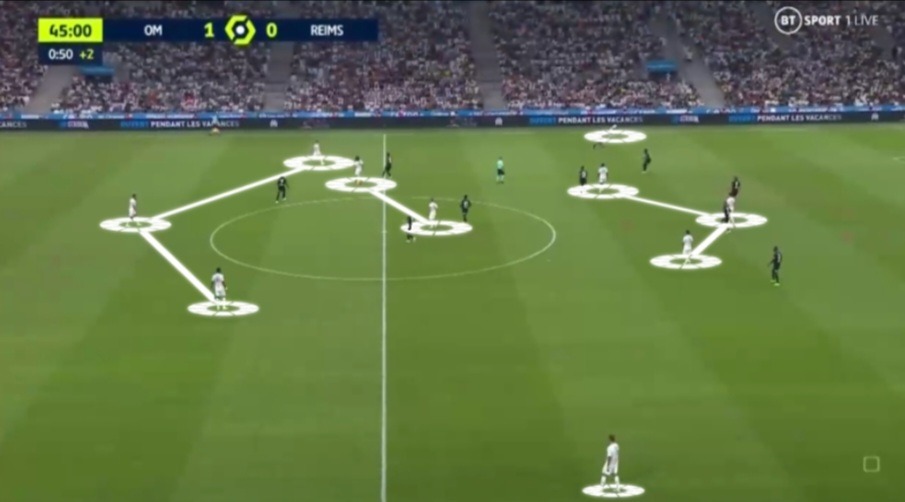
As seen above, his 3-4-2-1 shape looks to defend with five players and attack with five. The width comes from the wing-backs and the former Juventus assistant manager wants the two supporting the centre-forward to be goal threats too, making runs beyond the No. 9 whenever possible.
Marseille always have an out-ball as a result of their wing-backs taking up aggressive positions.
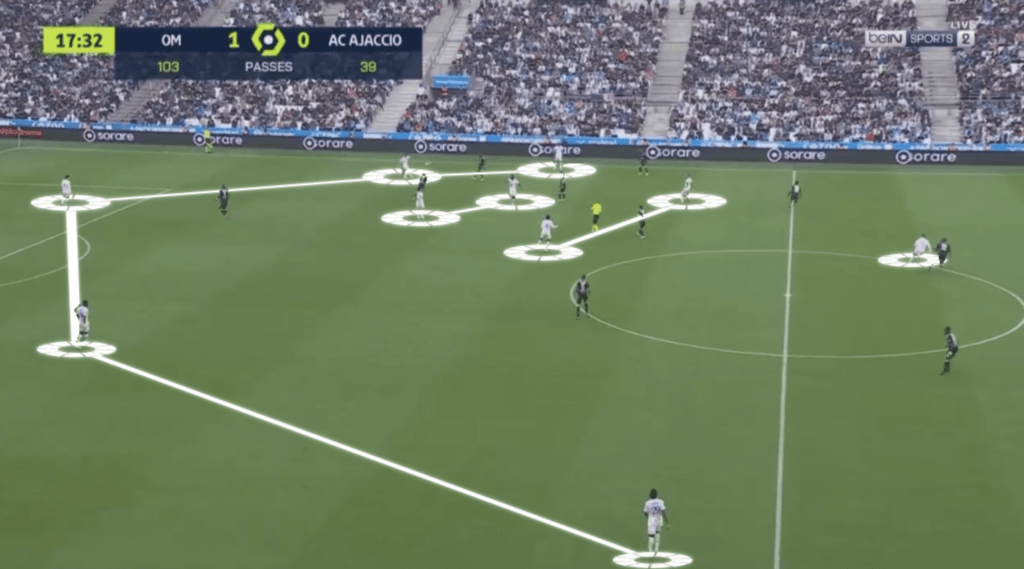
This can be seen in the above example. Despite the ball being on the left-hand side of the pitch, the right wing-back has not tucked inside. He is hugging the touchline and the threat of this switch means the Ajaccio left-back cannot cover his centre-back. This creates a one-on-one situation for Alexis Sánchez in a central part of the pitch.
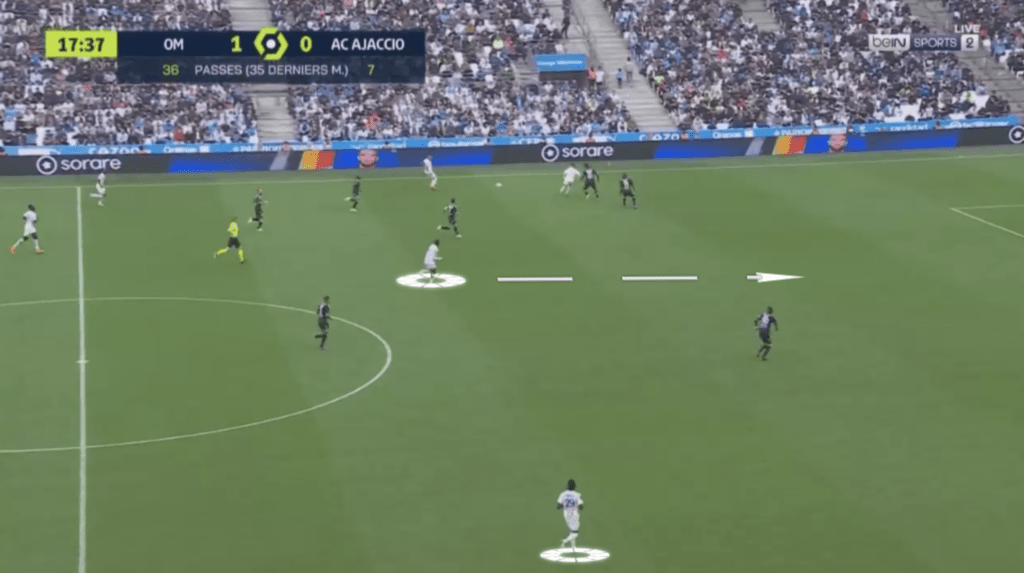
This particular move eventually ends with Gerson, one of the two players behind Sanchez making a run from deep and latching onto a Sanchez pass. He races into the box and should really square it to Issa Kaboré on the right, but the chance is wasted after a heavy touch. That space for Gerson is only there because the full-back can’t cover initially due to the position taken up by Kaboré.
That is a common sequence for this Marseille team this season. That is how Tudor likes his teams to attack.
This system places a lot of attacking responsibility on the wing-backs. Tavares and Clauss joined in the summer but both have impressed, relishing the freedom in the Marseille system.
Tavares has three goals to his name already while Clauss has one goal and five assists across all competitions.
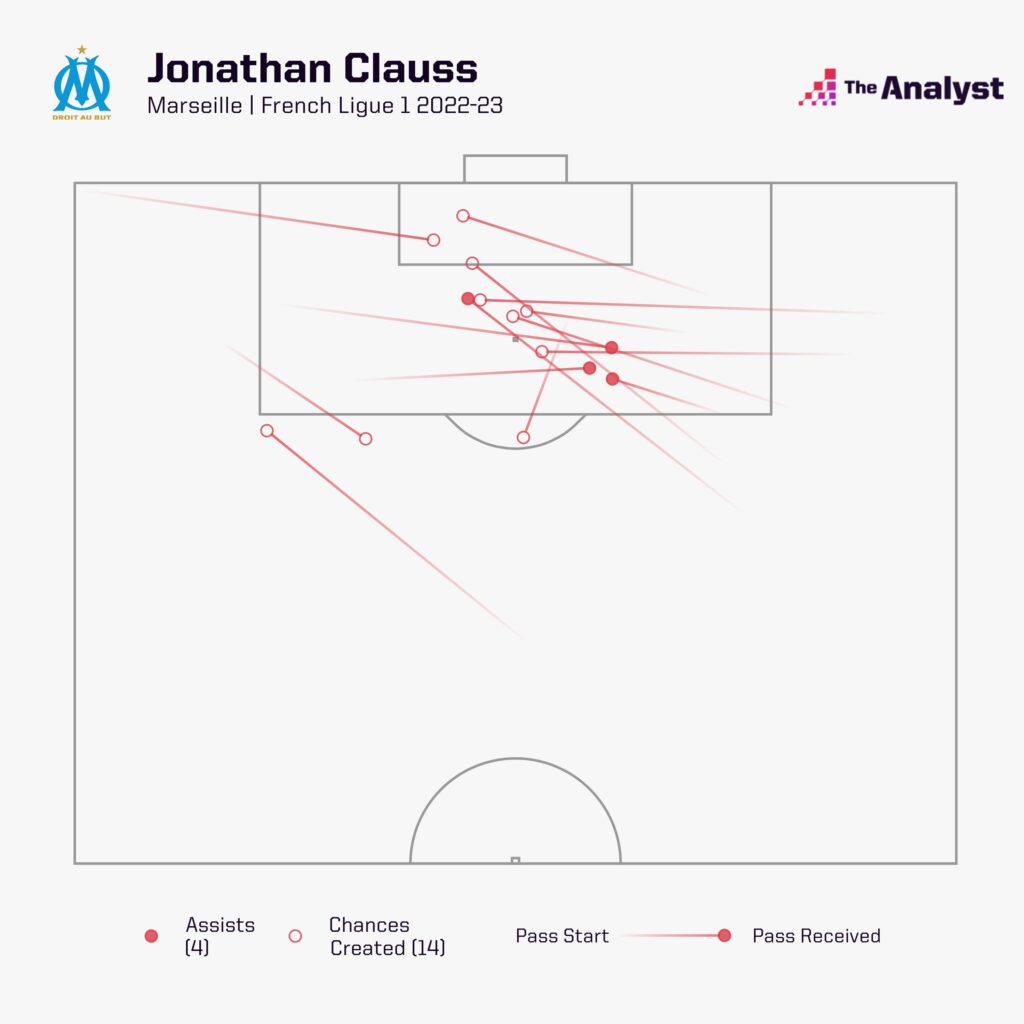
The 30-year-old French international is a creative menace on the right flank. He will hug the touchline while waiting for the ball but once in possession, he looks to get into central areas and pick out passes. Clauss takes up Kevin De Bruyne-like positions and executes through balls that the Belgian would be proud of.
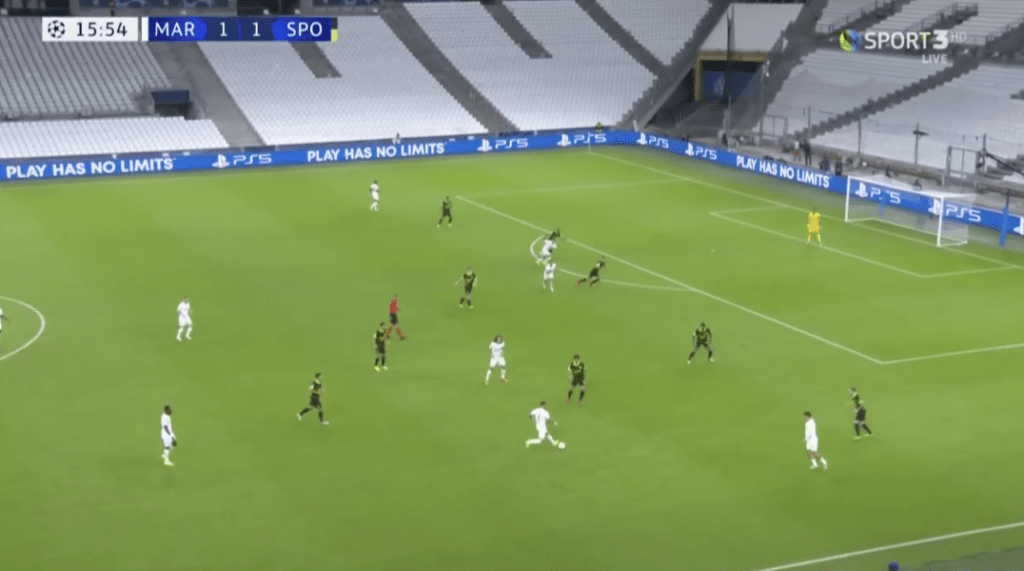
His assist against Sporting was right out of the De Bruyne playbook. His superbly weighted clip was headed home by Amine Harit after the versatile attacker had made a run beyond the striker and between the centre-backs.
While Clauss is the ball player, Tavares is the ball carrier.
That is the balance most top teams yearn for to ensure there are different ways to break down the opposition. For example, if opponents are able to repel balls into the box, Marseille can mix it up by getting the ball to their left wing-back.
The on-loan Arsenal full-back has been a revelation since the switch.
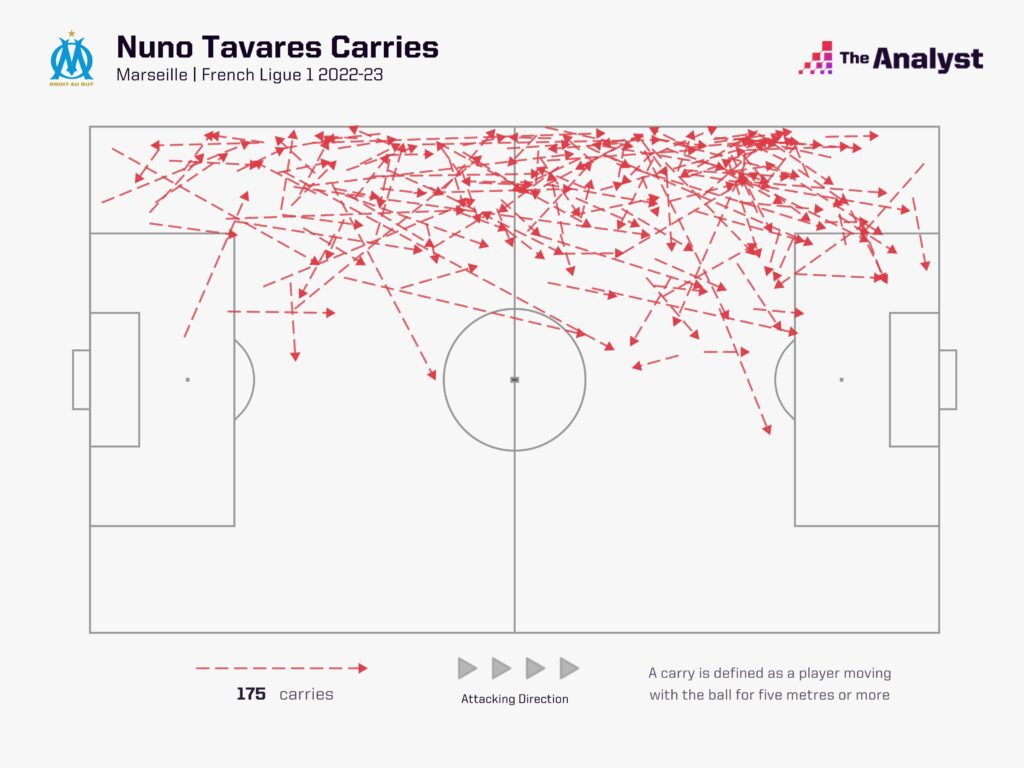
He ranks just outside of the top ten in Ligue 1 for average distance per carry, at 11.6m. Only one other full-back makes the top 10 and that is Bradley Locko of Reims with an average of 12.3m
Tavares ranks seventh in Ligue 1 for progressive carries per 90, averaging just over 13. For a little context here, he’s only just behind Neymar (13.9) in this category. He’s once again the only full-back within the top seven and he’s holding his own alongside the Brazilian and Sofiane Boufal – two of the best dribblers in the league.
There’s end-product to his work too. No player has taken more shots than Tavares’ 10 following a ball carry, and two of those have resulted in goals which is a league high. Furthermore, only Boufal has attempted more ball carries that include a take-on (33) than Tavares’ 30.
He is a wildcard. A player who is predictably unpredictable and consistently random. He is a paradox, but arguably the most effective player in Tudor’s system as a result.
The manager praised the young full-back in a recent press conference:
“He’s a good boy, a professional player. A little shy still off the pitch, but not on the pitch. He’s a great player and I think he can still grow in certain details like when and where to play well. And if he improves further, he will be one of the best in the world.”
To do what he does, he needs space to attack and that is why the new Marseille manager has implemented his Verona mid-block press to give the full-back the environment required to flourish.
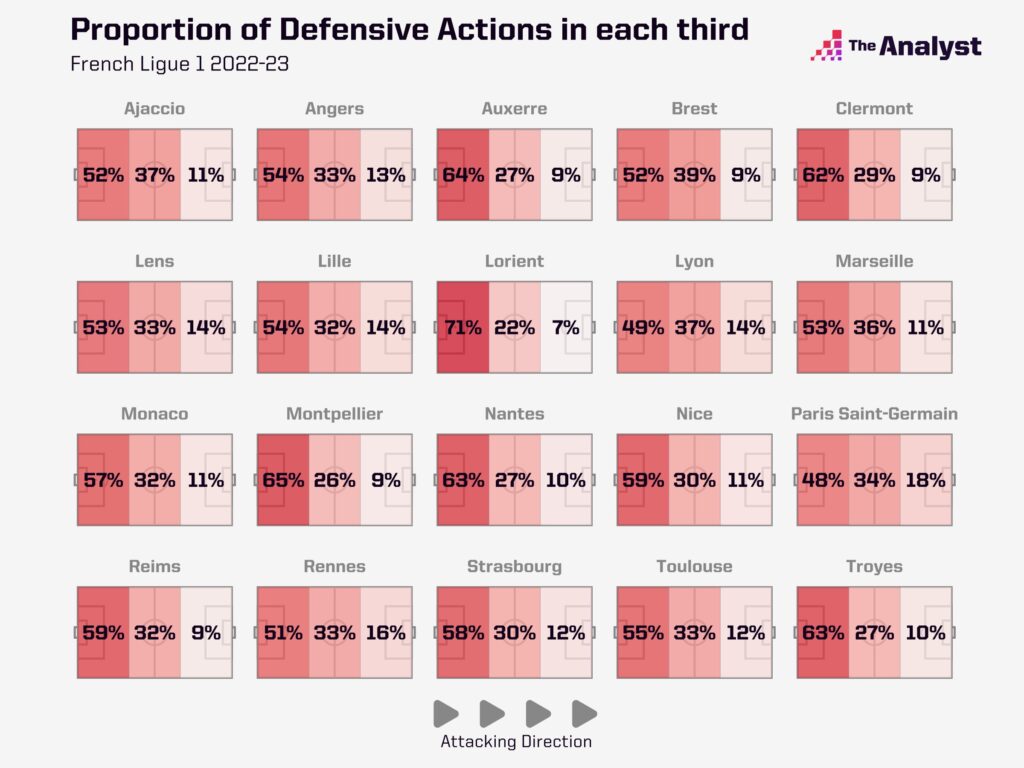
As evidenced by the graphic above, only three teams (Ajaccio, Brest and Lyon) have a higher proportion of defensive actions in the middle third. Marseille rank high for this metric despite only PSG having more of the ball this season (61% to Marseille’s 56%). OM don’t hunt for the ball straight after losing it, they instead drop off and lure the opposition onto them to create the space for the likes of Tavares and Sanchez to thrive.
And this has altered how the players in central areas are used.
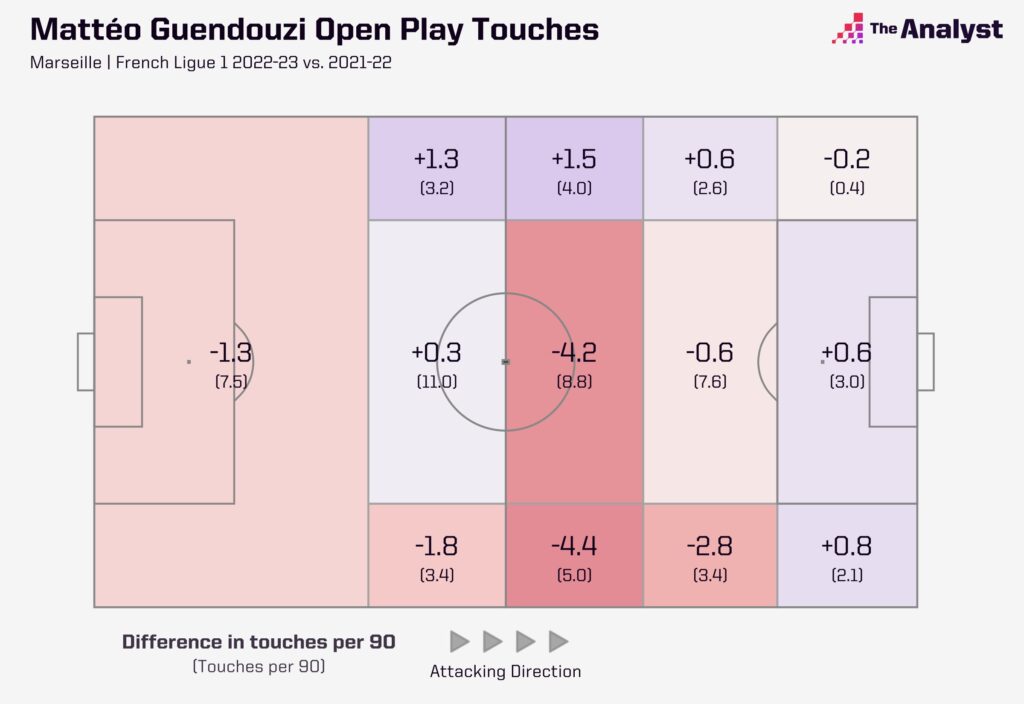
Matteo Guendouzi, nominally a box-to-box midfielder under Sampaoli, is having fewer touches in central areas and slightly more touches in wider areas and in the penalty area. At times he is deployed in the midfield two, tasked with covering the space behind the wing-back, but he has also been used as one of the two behind the forward and this goes some way to explaining the slight increase in touches in the attacking areas.
It is a horses-for-courses situation right now for Tudor. He can use Guendouzi in the advanced two against certain opponents and then pick from Cengiz Ünder, Dimitri Payet, Luis Suarez (not that one), Bamba Dieng and Harit against others. The one-time Juventus assistant manager has managed to find a system that is fairly rigid but allows a number of different profiles to thrive in central roles. The OM boss is an enviable position but it is one that he has orchestrated himself, albeit with the help of the recruitment team.
This summer was one of forced change for the Ligue 1 giants, but it does not appear to have hurt their long-term project. If anything, it has benefited them as a club, a collective and as individuals.
Enjoy this? Subscribe to our newsletter to receive five stories each Friday.
